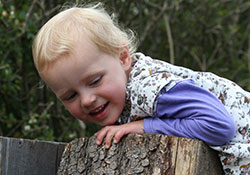Дети и подростки в Европейском регионе ВОЗ

WHO
Most children in the WHO European Region have a happy, healthy childhood and adolescence where they grow and develop into prosperous adults. In this period of the life-course identity is formulated, experimentations are made, and independence is developed.
However, inequality between and within all Member States, lack of access to quality services, maltreatment and unhealthy lifestyles, are negatively affecting health among the most vulnerable groups in society - children and adolescents.
What are the challenges in the early years and throughout childhood?
Although the European Region includes countries with the lowest number of infant and child deaths in the world, it also includes countries where children are 25 times more likely to die before the age of 5. In addition, mortality varies not only between but within countries. Even high-income countries have child poverty as a risk factor for poor health and inequality is growing.
- more than half of deaths among children under five years are due to diseases that are preventable and treatable through simple, affordable, proven measures;
- annually, almost 1 million children in the Region do not receive all scheduled vaccinations resulting in 90,000 cases of measles and 70,000 cases of rubella being reported in the past 3 years; and
- a considerable proportion of children in many European countries do not meet recommended levels of physical activity (1 in 3 children aged 6-9 are overweight or obese) and over 60% of children who are overweight before puberty will be overweight in early adulthood.
Investing in health, social care and education in early childhood and working with families who require support to improve their parenting skills, has proven to be the most effective way to improve development and reduce inequality. Evidence shows that high-quality early years investments and services can compensate for the effects of social disadvantage on early child development and promotes the full developmental potential of all children. Such efforts must be continued throughout childhood and adolescence.
What are the challenges for adolescents in the European Region?
Even though adolescence is a period of experimentation most adolescents’ grow through this period in a healthy way but many challenges have to be faced and handled. The Region includes countries with the highest adolescent suicide rates in the world.
- 1 in 4 boys and nearly 1 in 6 girls drink alcoholic beverages once a week at age 15 and trends vary very much across the Region.
- 25% of 15-year-olds have had sexual intercourse, but more than 30% in some countries are not using condoms or any other form of contraception, resulting in sexually transmitted diseases and unintended pregnancies.
The WHO/Europe strategy- Investing in children: the European child and adolescent health strategy 2015–2020-has taken into account the challenges facing children and young people in the European Region and uses data from the Health Behaviour in School-aged Children study (HBSC) which looks at the health and well-being of teenagers from a health and social determinants perspective. It provides a wealth of information and analysis, presenting findings on patterns of health among young people aged 11, 13 and 15 years in 43 countries across the WHO European Region and the number of countries is growing.
The health promoting school approach demonstrates how health and education goals can come together and is based on more than three decades of science-based and practice-based experience throughout the European Region. As a setting approach it demonstrates a proven effective example of health in all policies. The Schools for Health in Europe network (SHE) provides the entry point for introducing such approaches.
Making young people visible is the key to change
To protect children and adolescents in the best way possible and to make the smartest and most effective solutions, policies should be developed taking into account their specific needs and adopting a rights-based approach. This means involving children and adolescents in the decision-making process and giving them a voice when dealing with organizations and professional bodies that are working with, and for them.
All children and adolescents should have the opportunity to have a secure and healthy transition from childhood to adolescence and from adolescence to adulthood, equipped with the necessary skills and competences to make a positive contribution to their own health and to society.



